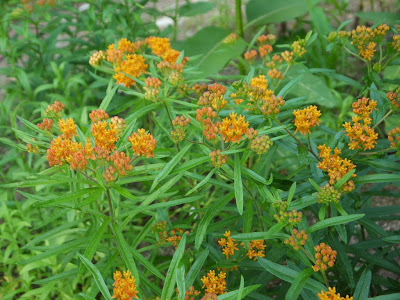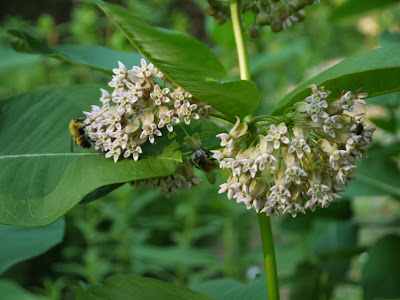 Here's a type of sedum that the Eklunds undoubtedly planted. Not native, so it's got to go. It comes back really quick.
Here's a type of sedum that the Eklunds undoubtedly planted. Not native, so it's got to go. It comes back really quick. This is Canadian Clearweed and even though it looks like nettles and is in the nettle family, it doesn't sting (thank you thank you thank you). It grows like crazy in the shady terraces off to the right. Hmm. Maybe we should find a place for it to grow and make it part of the garden. It's native after all. Although here's a funny like from Wikipedia: "It is sometimes grown as a ground cover or for attracting deer." Oh, I just found this interesting video on the weed. The more I think of it, the more I think we should incorporate this one into the garden.
This is Canadian Clearweed and even though it looks like nettles and is in the nettle family, it doesn't sting (thank you thank you thank you). It grows like crazy in the shady terraces off to the right. Hmm. Maybe we should find a place for it to grow and make it part of the garden. It's native after all. Although here's a funny like from Wikipedia: "It is sometimes grown as a ground cover or for attracting deer." Oh, I just found this interesting video on the weed. The more I think of it, the more I think we should incorporate this one into the garden. A dense cluster of young Black Swallowwort. This is a vine with leaves that are opposite, shiny, and pointy. Phlox also has opposite leaves, but not pointy.
A dense cluster of young Black Swallowwort. This is a vine with leaves that are opposite, shiny, and pointy. Phlox also has opposite leaves, but not pointy. Here's the Black Swallowwort when it's more developed, including seed pods.
Here's the Black Swallowwort when it's more developed, including seed pods.Grass. It comes up all over the Butterfly Bed.
Whatever this thing is called.






























